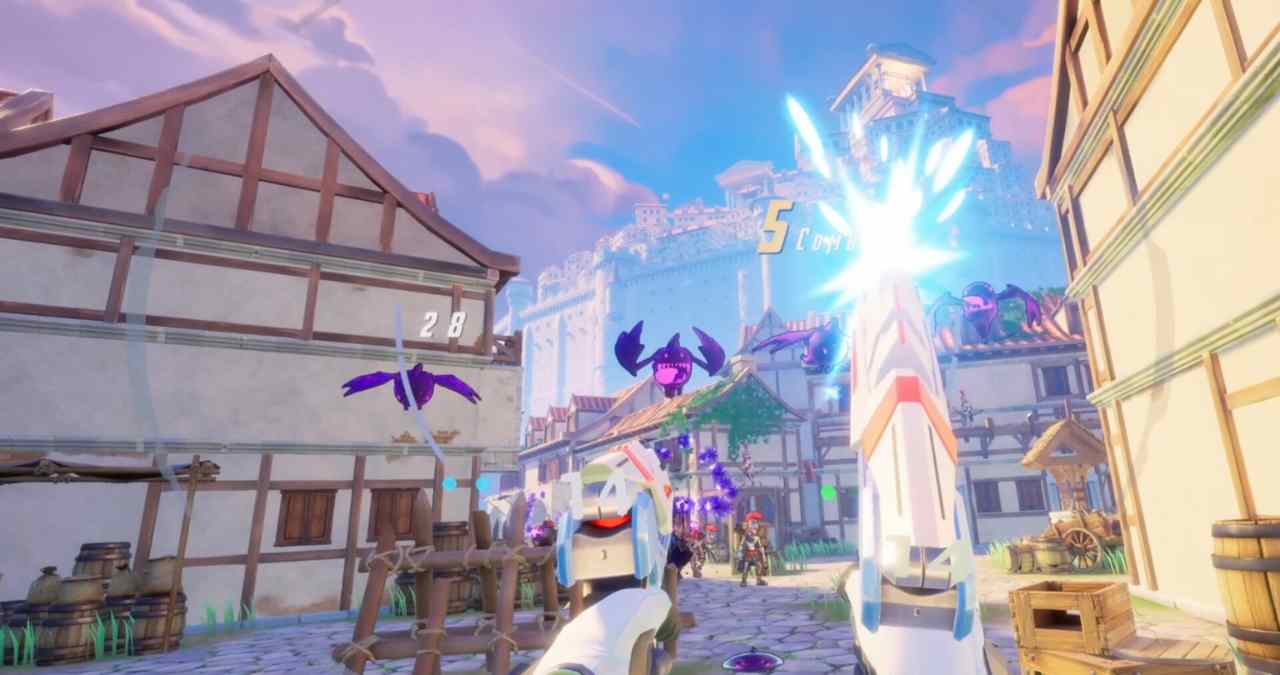Chrono Hunter is stepping into the VR shooter space with something more than just gunfire and enemy waves. Built around time manipulation and rapid arena movement, the game pushes players to fight, rewind, and rethink under pressure all within self-contained stages designed for repeat runs.
Planned for release on Quest and SteamVR, Chrono Hunter isn’t positioning itself as a massive live service or multiplayer brawler. This one’s tighter in scope, aimed at players who want fast combat, focused design, and a unique mechanic that actually affects how you play.
Time mechanics drive moment-to-moment gameplay
At the center of Chrono Hunter is its time-shift system. Players can rewind short bursts of time to reposition, avoid death, or rethink a poor decision. It’s not unlimited, so timing it matters and it adds a puzzle layer to what would otherwise be a traditional wave shooter.
Rather than leaning on cover systems or regenerating health, this mechanic lets you experiment mid-fight. Got cornered? Backtrack two seconds and take the high ground instead. Used up your ammo? Rewind to conserve it or avoid wasting a shot.
It’s not just a gimmick layered on top. The time control mechanic is baked into how the arenas are designed and how enemies scale, encouraging aggressive play that still rewards tactical thinking.
Solo combat built around tight, looping arenas
Chrono Hunter is single-player, but it doesn’t feel static. Each level is an arena-style setup with changing waves, enemy types, and increasingly intense conditions. You’re not navigating long story missions you’re surviving high-speed gauntlets with environmental hazards, limited space, and tight windows for success.
This format keeps sessions short but intense. Movement is fast, aiming is responsive, and the arenas are structured to push you into verticality and creative angles. Expect to be ducking under pipes, leaping across gaps, and snapping off shots mid-air while managing cooldowns.
That rhythm makes the game feel closer to SUPERHOT VR or Space Pirate Trainer than anything tactical or sim-focused. The loop is simple: survive waves, manage time, clear the zone then do it better next round.
Visual style emphasizes clarity over flair
Chrono Hunter isn’t chasing realism. The art direction is clean, almost stylized, with sharp lighting and simplified environments that make spatial awareness easy. Enemy silhouettes are distinct, effects are clear without being overwhelming, and UI elements are minimal.
That choice works well in VR. You can read the battlefield quickly, track threats without clutter, and focus more on movement and reflexes than parsing noise. The focus seems to be on gameplay readability rather than visual spectacle.
Environments lean into sci-fi, with metallic corridors, pulsing doors, and digital overlays. The design sells the setting without over-explaining it. This isn’t a narrative-driven world it’s a mechanical sandbox for time-bending action.
Designed for VR-native mechanics and replayability
From what’s been shown so far, Chrono Hunter is built around VR-native controls. Gun handling, reloading, and movement are all designed to feel physical, with no reliance on flat-screen-style input schemes. That helps sell the intensity, especially in small arenas where every move feels close and personal.
Replayability looks like a key angle. With short sessions, leaderboard potential, and time manipulation baked into strategy, the game invites repetition. It’s not a roguelike, but it plays into that rhythm fail, rewind, try again.
Chrono Hunter isn’t aiming to redefine VR shooters, but it’s trying to reframe what solo combat can feel like when you give players actual control over time. That alone sets it apart in a space crowded with copy-paste wave defense clones.
Virtual Reality Explorer & Game Reviewer
Always the first to plug in. VRSCOUT dives head-first into the most immersive VR worlds, analyzing mechanics, comfort, innovation, and that elusive “presence” factor. If he says it’s worth it, it probably is.




